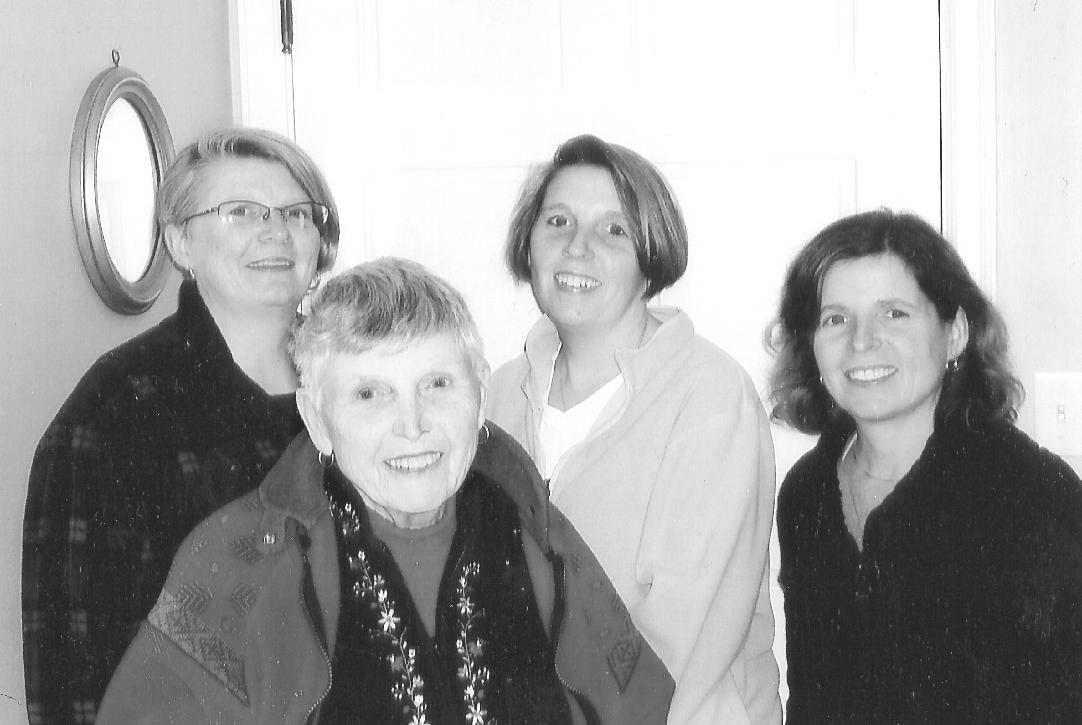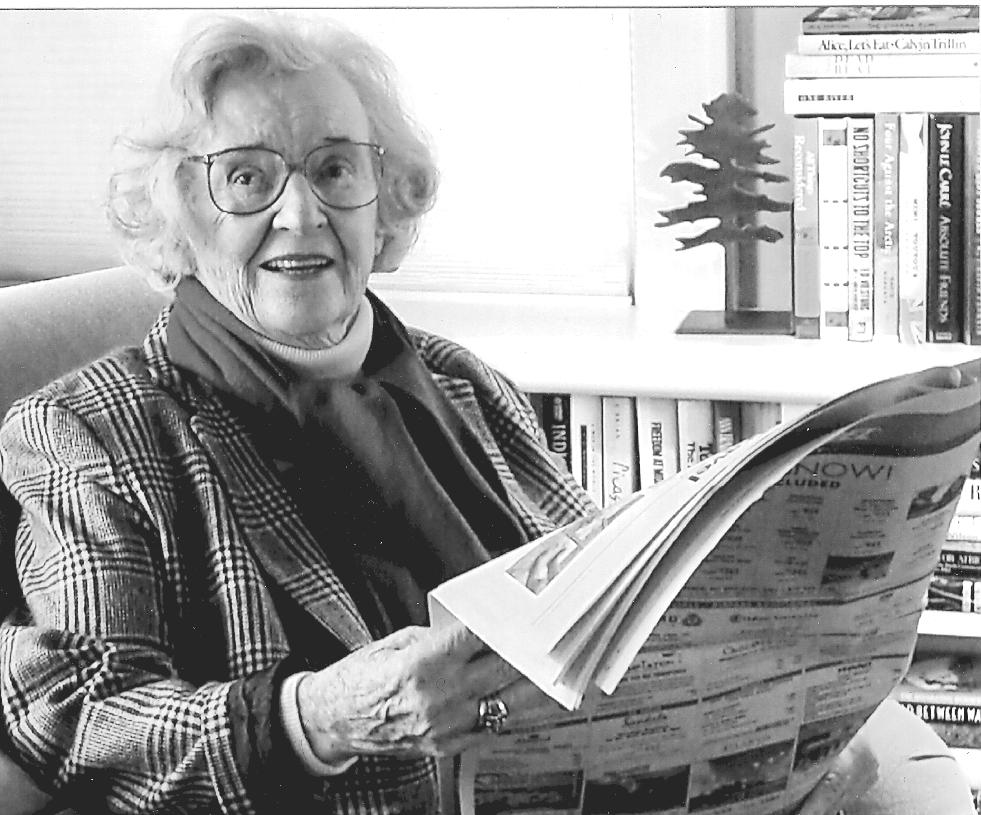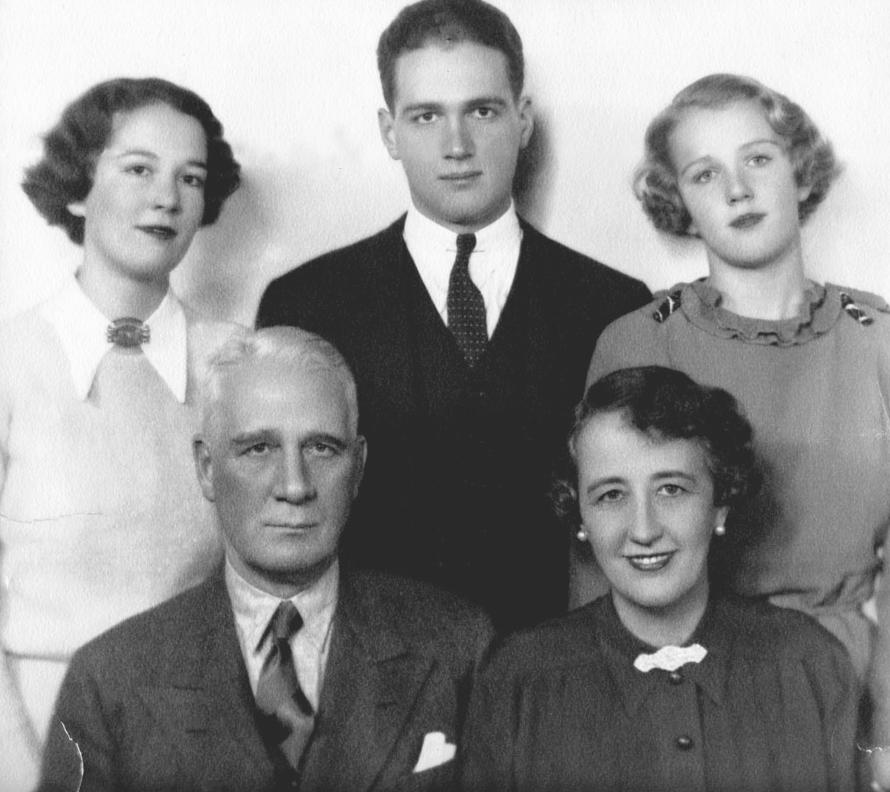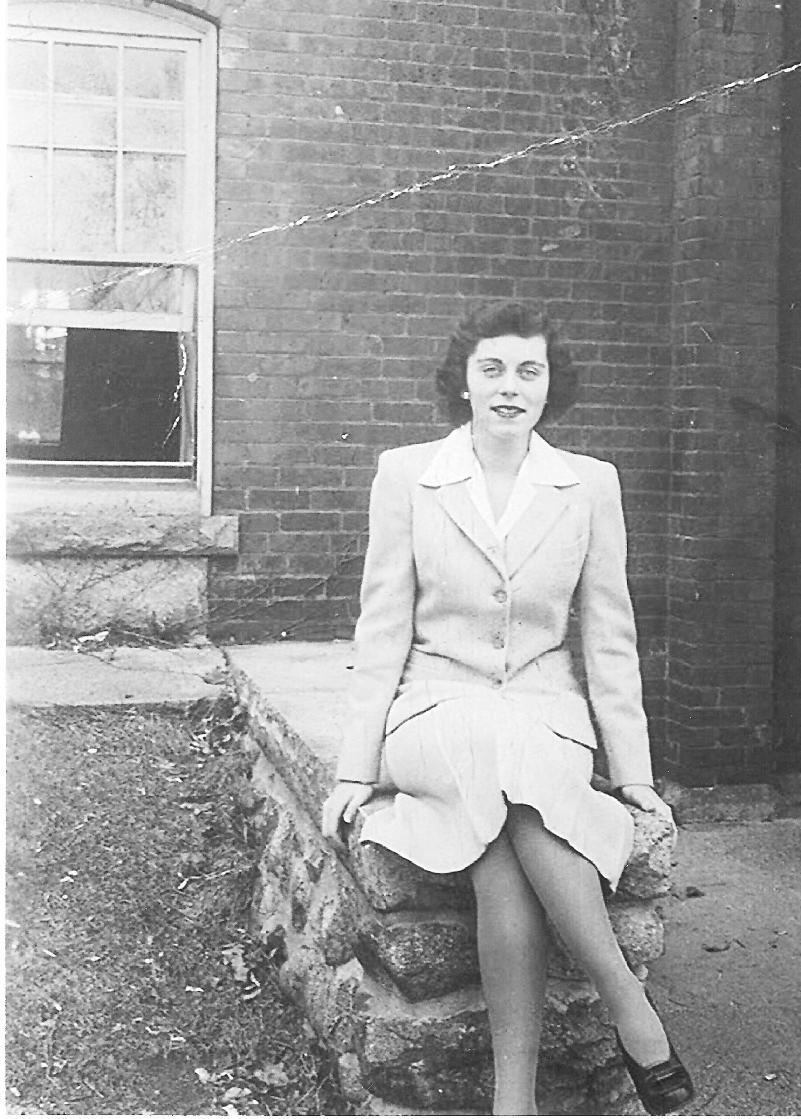
10 minute read
Helen Raynolds anderson ’44
Helen in front of Parsons House at Smith, 1942
Zest for life and learning
Advertisement
Helen Raynolds anderson ’44
interviewed by Ann mitchell Pflaum ’63 and Jessica Petocz ’02 on February 6, 2008
Helen Raynolds Anderson describes the strong ties among Smith alums worldwide as being “like Stanley and Livingstone—even if you didn’t know a person in college, when you come together in far places you share the Smith bond.”
This lively woman chose to enroll at Smith because “I had never seen such enthusiasm and loyalty among college alumnae as I saw among Smith’s graduates. I concluded that it must be a wonderful place. Also, older women I knew who had been at Smith were remarkable for their intelligence and abilities. My older sister, Jinny, adored Smith and of course was a big influence” (see page 12 for interview with Virginia Raynolds Humphrey ’42). And with a great-aunt, Carlene Blunt, who attended Smith in the mid-1890s, and an aunt, Eugenia Blunt, who was there around 1910, there was a strong historical awareness of the college in Helen’s family.
Her ancestors arrived in Minnesota in the 1860s. “My great-grandfather Russell Bennett came here from Connecticut for health reasons. The Minnesota climate was widely believed to be particularly healthy!” We share a laugh. “The family, however, continued to look to the East for education.”
As youngsters, the Raynolds children absorbed the importance of honesty, generosity, education, and obeying the law. “During the Depression, when his company was short on funds to pay employees, my father paid them out of his own pocket,” she remembers. Another example: “During Prohibition, when most of their friends were still enjoying cocktail parties, my parents said, ‘We don’t break the Law of the Land,’ and they abstained.” Their father passed on to his daughters his interest in learning, the outdoors, tennis, astronomy, world affairs, and many other subjects as well.
Her parents weren’t the only ones intent on influencing the girls. Helen commented that she learned from Grandmother Raynolds to love European culture. “She taught Jinny and me about European art by giving us reproductions of masterworks from the Middle Ages, classical Greece, and the Renaissance to hang in our room, and she rotated them periodically. I still have those pictures, among them a reproduction of Benozzo Gozzoli’s fresco Procession of the Magi.” She shows us the picture, adding, “I’ll never forget the thrill of seeing the original when our mother took us to Europe.”
“Another picture our grandmother gave us was a huge photo of a sculpture of Perseus with the Head of Medusa. This created quite a sensation when I brought it to my fourth-grade class for show and tell. Kenwood School in those days was not accustomed to classical nudes, but the teacher was pleased, once she recovered.” Their grandmother also taught
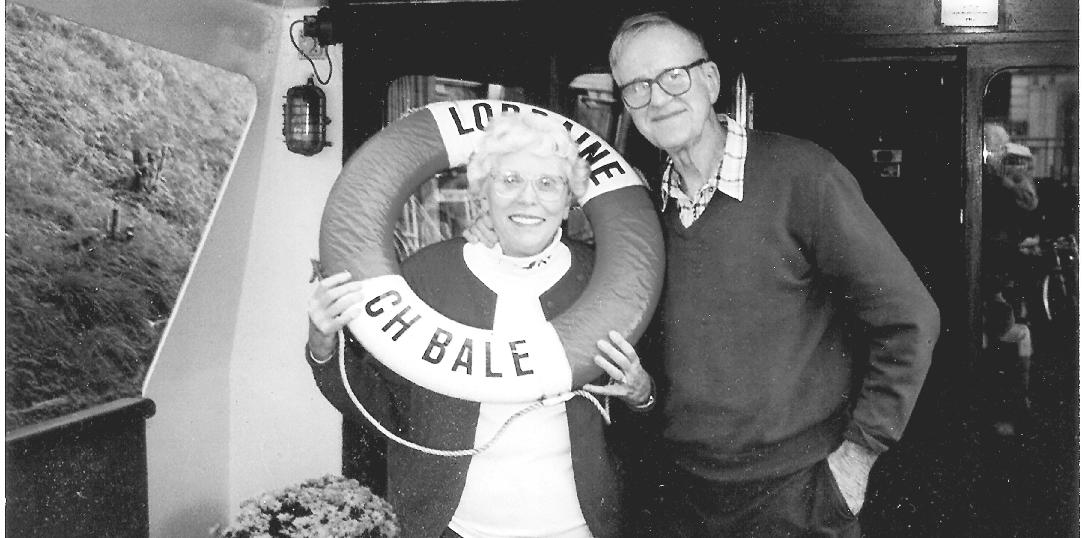
In France with husband Alan, 2001
Commenting on the picture of a greek sculpture she brought for fourth-grade show and tell, helen said, “Kenwood School in those days was not accustomed to classical nudes, but the teacher was pleased, once she recovered.”
Helen and Jinny the Greek myths by acting them out with the girls: “Tales full of heroes, gods, and weird creatures—talk about violence and excitement! We loved those myths!”
Family members also taught by example. “Grandmother was active in a local study club for women called the Peripatetics as well as a member of a French conversation class. Years later I, too, joined the Peripatetics and started a French group of my own.”
When Helen arrived at Smith, she found not only instruction but also inspiration from a number of professors, notably Mary Ellen Chase. “A friend and I were enthralled by her—we sat at her feet, took her out for tea. She was a dramatic teacher, memorable for her course on the King James Bible as literature. Her class spoiled me for any updated version of the Bible, and gave me a lifelong appreciation for the beauty of its language.”
“Although I was an English major, I took courses in as varied an array of departments as I could. Isn’t that what Liberal Arts is supposed to offer you? The range of courses I took has been a great source of enrichment in the years since college—not specifically in a professional way but in giving me a broad background of
knowledge in many fields and the wish to keep reading, studying, and trying new things.”
Attending Smith during wartime, Helen was recruited before graduation by a representative of the OSS—Office of Strategic Services, precursor of the CIA. Headed by General “Wild Bill” Donovan, the OSS carried out intelligence research and covert operations. “After security clearance, I went to Washington, DC, where I was assigned as a researcher in the Far East section. I shared a house in Georgetown with five Smith classmates—one in OSS, one in Army Intelligence, and three in the Quartermaster Corps. It was a lively household. We had a dog and rabbits, and we entertained servicemen practically nonstop!”
“My responsibilities at OSS were to research cities and towns and provide maps, information about street patterns, hospitals, geographic grids—information that would be needed in the event of invasion by our troops. We researched areas in the Philippines, Japan, Halmahera, Celebes, the Kuriles, and other islands, and interviewed people who had escaped ahead of the Japanese. Our work was named the Joint Army Navy Intelligence Survey, JANIS. This was a whole new education for me! … I remember the excitement in the office on June 6, 1944, when we learned it was D-Day. We felt we were at the center of the universe.”
Coloring Helen’s good memories of her OSS days is some dismay over current affairs. “Now I am appalled at what the CIA has become—a private army of the President.”
Returning to Minneapolis, Helen married Alan Anderson on September 20, 1947—“the prelude to a happy marriage that has lasted for 61 years!” He had attended Kenwood School three years ahead of her and went on to Harvard College and the Harvard Business School before serving in the Army. They had three children—Martha, Wells, and Jane Anderson Howard (SMITH ’75). Because she experienced grief first-hand with the death of Martha at age 27, Helen continues to be a volunteer facilitator for the Downtown Coalition for Grief Support sponsored by eight downtown churches.
She has been involved in other volunteer activities as well. One of the most satisfying, she says, was serving as a docent at the Minneapolis Institute of Arts. “We had the most wonderful trainer—Joan Adams [Mondale].” Some of the boards Helen has served on or chaired include Planned Parenthood, Children’s Hospital, Washburn Child Guidance Center, the Urban League, the Junior League, Colonial Dames, and Plymouth Congregational Church.
“One of the most rewarding involvements for me was with the Minneapolis Urban League,” she comments. “Before going to Smith I had not known any African Americans. I am everlastingly grateful to the diverse multiracial atmosphere at Smith for showing me a wider world. I made my first black friend there and began to comprehend the terrible inequality that existed in the life that I had taken for granted.”
After daughter Martha’s death in 1975, Helen went to work in her husband’s business, Anderson’s China Shop in downtown
living through the great depression left helen with such sayings and practices as “Clean your plate, Wear it out, Make it do, don’t waste, don’t acquire more than you can use.”
Minneapolis, a memory of elegance for generations of Minneapolitans. “Helping out at Christmas was hectic as I learned about inventory, postage, and taxes, arranged for gift wrapping, and so on. I wore a button that said, ‘Don’t rush me. I’m making mistakes as fast as I can.’ I enjoyed our annual trips to Europe for the store, where we visited factories, watched glass being blown, and met the factory directors who were always eager to know about the current American preferences. We retained the business, which had been started by Alan’s grandfather, until the 1990s.”
Traveling has been a high point of Helen’s life. “I will always remember climbing to the top of the Duomo in Florence, hundreds of steps, and seeing that beautiful city spread out below. Years of travel with my husband meant pursuing Romanesque churches in the Auvergne, hiking the path along the Cinque Terre in Italy long before so many people were there, climbing every cathedral tower possible, boating down rivers in Russia, and having close encounters with orangutans in the Borneo jungle! A wonderful life.”
“Once you leave Smith you never stop learning,” comments Helen. “After four years the college has you imprinted! We have traveled to many countries, and my Smith legacy has meant that I can feel familiar and at home with their history, culture, and arts. We go right on reading and stretching our minds and taking courses. We know the importance of being informed citizens and serving our communities. The values learned at Smith simply require this of her graduates.”
“And the friends I made at Smith have been friends for life. We keep in touch and visit whenever possible. Reunions have been a wonderful chance to catch up with others and to make new bonds. On an Elderhostel trip in the 1990s we came across a pair of elderly Smith sisters from Provincetown. One of them said she had taken up playing the French horn at age 65 and now played in the Provincetown Orchestra. So typical of a Smith graduate to take on something new and difficult!”
Thinking back to other activities, Helen says, “I especially loved being a raptor spotter for several years for a large park reserve system— snowshoeing in February (and sometimes falling into creeks) to map platform nests, and monitoring the nests for great horned owls’ occupancy. Then the next month we’d watch for red-tailed hawks. Great excitement when the various raptors nested successfully! Ospreys and kestrels were also watched, the success of the birds being an indicator of the health of the park. Another time the park called me to help airlift, with net and bucket, leopard frogs across a busy road. They had left their lake and were trying to reach a safe swamp to lay eggs away from hungry fish. A local television station filmed our frantic efforts and interviewed me about the importance of frogs in the ecological chain. Smithies are always ready to try something new!”
One of the most significant historical events shaping Helen’s life was the Great Depression. “I can remember men coming to the door to ask
if we needed shoveling or assistance in the yard. They often were men who were well educated but unable to find jobs and needed money simply to eat. If my mother didn’t feed them, she provided passes to a soup kitchen in the Gateway District at the foot of Hennepin Avenue—a gathering place for crowds of homeless and unemployed men. Although our family had enough resources, awareness of the larger picture left me with such sayings and practices as Clean your plate, Wear it out, Make it do, Don’t waste, Don’t acquire more than you can use. The lessons of that era have lasted all my life.”
“The future looks so uncertain,” says Helen when asked for her thoughts looking forward. “The only steps I can think of that we should take are to keep informed about national and international affairs, vote as carefully as we can, and work as best we can for the causes to which we can contribute. I’m happy to say that our two children are both contributing to the well-being of the community through their professions and volunteer service.”
“My advice to young alums would add the request that they keep reading and learning in new fields. Their Smith education has prepared them for leadership, and there is a world of opportunities before them. I don’t think today’s graduates need much of a warning. Smith is turning out spectacular women … look at all those Fulbright awards. They will stay involved!” t
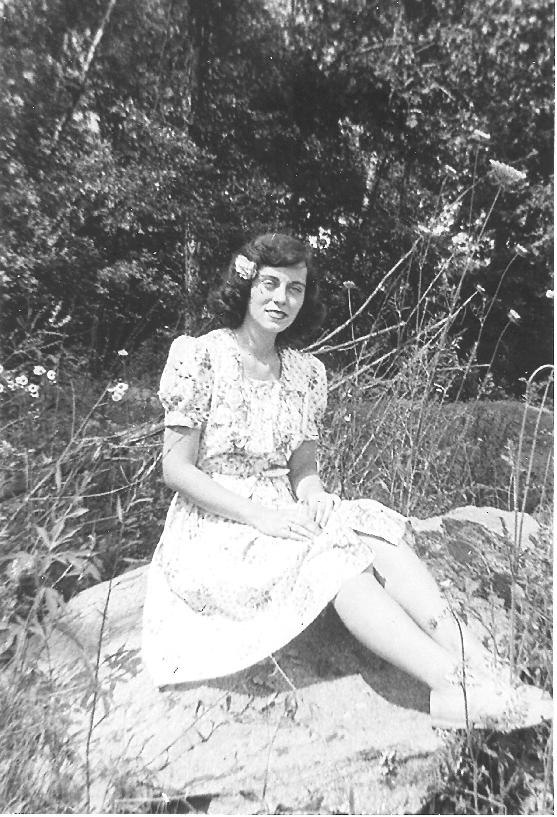
While working for the OSS in Washington, DC, 1944






